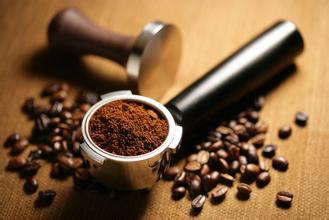Introduction to the characteristics of Coffee Grinding degree treatment method in Nicaragua Los Congo Manor
Managua, the capital of Nicaragua, is located in the western part of the border, on the south bank of Lake Managua, and hence its name. 140 kilometers northwest of Corinto Harbor on the Pacific coast. 55 meters above sea level. It is a beautiful Spanish city. Because it is located on the east side of the Pacific volcanic seismic belt, the city has experienced four strong earthquakes in the past 100 years, of which one in December 1972 caused the most damage to the city. The reconstructed Managua has taken important measures to reduce population density, relocate large enterprises and improve the earthquake resistance of buildings.
The word Managua comes from the Nahual language of the Indians and has two meanings, one is "Mexican place" and the other is "water side." About 10,000 years ago, there was human activity on the shores of Managua Lake, and traces of ancient human activity can be seen from the ruins of Akolink. Due to natural disasters such as earthquakes, residents have moved many times. When the Spanish conquered Nicaragua in the early 16th century, it was still an important Indian town. It became a city in 1984. In 1852 it was designated the capital of the Republic. Since then, it has become the political centre of the country. The new Constitution promulgated on January 9, 1887 stipulates that Nicaragua is an independent, free, autonomous, unified and indivisible State. The President is Head of State, Head of Government and Supreme Commander of the Armed Forces. The President is elected for a five-year term. Legislative power is exercised by the National Assembly. Cabinet is the executive branch of government headed directly by the President, assisted by the Vice President and Cabinet.
In the national elections of 4 November 2001, Bolaños of the ruling Constitutional Liberal Party was elected President with 54.7% of the vote and took office in January 2002. After taking office, Bo continued the macro-policies of the previous government, devoted himself to reform to establish a lean and efficient government institution, rectified the economic and financial system, persisted in the struggle against corruption, restored people's trust in the government, strengthened internal unity and normal order of the government, attached importance to the development of large and medium-sized enterprises, created employment opportunities and encouraged investment. Bo announced on his first day in office that he would raise the minimum wage of 12000 national civil servants by 20% and the salary of teachers by 18% to fulfill his promise.
Nicaragua is an economically backward agricultural country and one of the poorest countries in Central America. The unemployment rate is very high and the people live in poverty. Coffee is the pillar industry of Nicaragua, producing nearly 100,000 tons of coffee beans every year. Because of the poor economic base, the coffee industry is still relatively backward, and coffee farmers are also in a relatively poor state.
Although Nicaragua is a large country in Central America, it is not a big producer of coffee in the world. Compared with its neighbor Costa Rica, its production and reputation are much weaker. However, Nicaragua coffee of high quality ranks among the top coffee beans in the world and enjoys a reputation.
Traditional Nicaragua coffee farmers are accustomed to washing coffee fruits for subsequent processing. Coffee farmers became more accustomed to using washing to ensure that the flavor of green coffee beans was more stable and clean. It was not until about 2009 that the traditional concept of coffee farmers changed and more areas began to try processing methods such as full sun and honey treatment.
The Matagalpa region mentioned earlier is the coffee region that produces the best coffee in Nicaragua, and here is a heavyweight coffee estate worth introducing-El Limoncillo. The estate is located in the plateau area between 950 and 1300 meters above sea level in Matagalpa. The coffee trees planted are surrounded by tall coniferous forests, providing shade for the growth of coffee trees. This allows the coffee tree to both get sunlight and protect the plant from the sun.
In order to ensure the quality of coffee, the method of manual picking will be used in the picking process of coffee fruit, and the fully ripe fruit will be picked one by one. It usually takes three times to complete the picking. Although the manual picking method is high in labor cost and low in picking efficiency, it can greatly protect the plants from damage during the picking process, and the ripe fruits will have better sweetness. The producers 'efforts were not in vain. Lemon Tree Coffee won the second place in Nicaragua's COE National Competition in 2008. This bean has a beautiful appearance, delicate and rich flavor after washing, with fruit and vanilla, cream aroma, since the first battle to become famous for more attention

Important Notice :
前街咖啡 FrontStreet Coffee has moved to new addredd:
FrontStreet Coffee Address: 315,Donghua East Road,GuangZhou
Tel:020 38364473
- Prev

Introduction to the characteristics of Coffee varieties and the production areas of Coffee in Joy Manor, Nicaragua
Nicaragua is one of the major gold-producing countries in Latin America. It has been proved to have 106 gold veins, with an annual output of 70,000 ounces, ranking 13th in the world. Other minerals include silver, antimony, zinc, copper, lead and so on. Rich in geothermal resources. There are two oil deposits. Forests account for 43% of the country's area, exporting pine and mahogany. Fish and shrimp and other aquatic products are rich in the southwestern city of Nicaragua and the capital of Massaya province. Bit
- Next

Introduction to the characteristics and varieties of coffee flavor description and grinding treatment in Mercedes Manor in El Salvador
El Salvador's coffee accounts for 40% of the country's exports, and it is usually picked in November, December and January-March of the following year. The export of raw beans lasts almost all year round. Coffee is produced in seven of the country's 14 provinces, with the largest number in the northwestern provinces of chalatenango and santa ana. The coffee produced in El Salvador is 100% Arabica, of which 68% is
Related
- Does Rose Summer choose Blue, Green or Red? Detailed explanation of Rose Summer Coffee plots and Classification in Panamanian Jade Manor
- What is the difference between the origin, producing area, processing plant, cooperative and manor of coffee beans?
- How fine does the espresso powder fit? how to grind the espresso?
- Sca coffee roasting degree color card coffee roasting degree 8 roasting color values what do you mean?
- The practice of lattes: how to make lattes at home
- Introduction to Indonesian Fine Coffee beans-- Java Coffee producing area of Indonesian Arabica Coffee
- How much will the flavor of light and medium roasted rose summer be expressed? What baking level is rose summer suitable for?
- Introduction to the characteristics of washing, sun-drying or wet-planing coffee commonly used in Mantenin, Indonesia
- Price characteristics of Arabica Coffee Bean Starbucks introduction to Manning Coffee Bean Taste producing area Variety Manor
- What is the authentic Yega flavor? What are the flavor characteristics of the really excellent Yejasuffi coffee beans?

